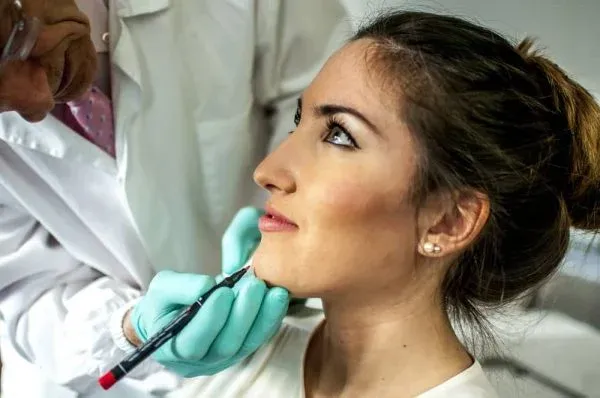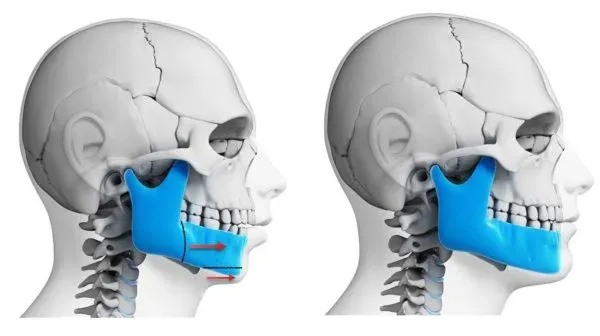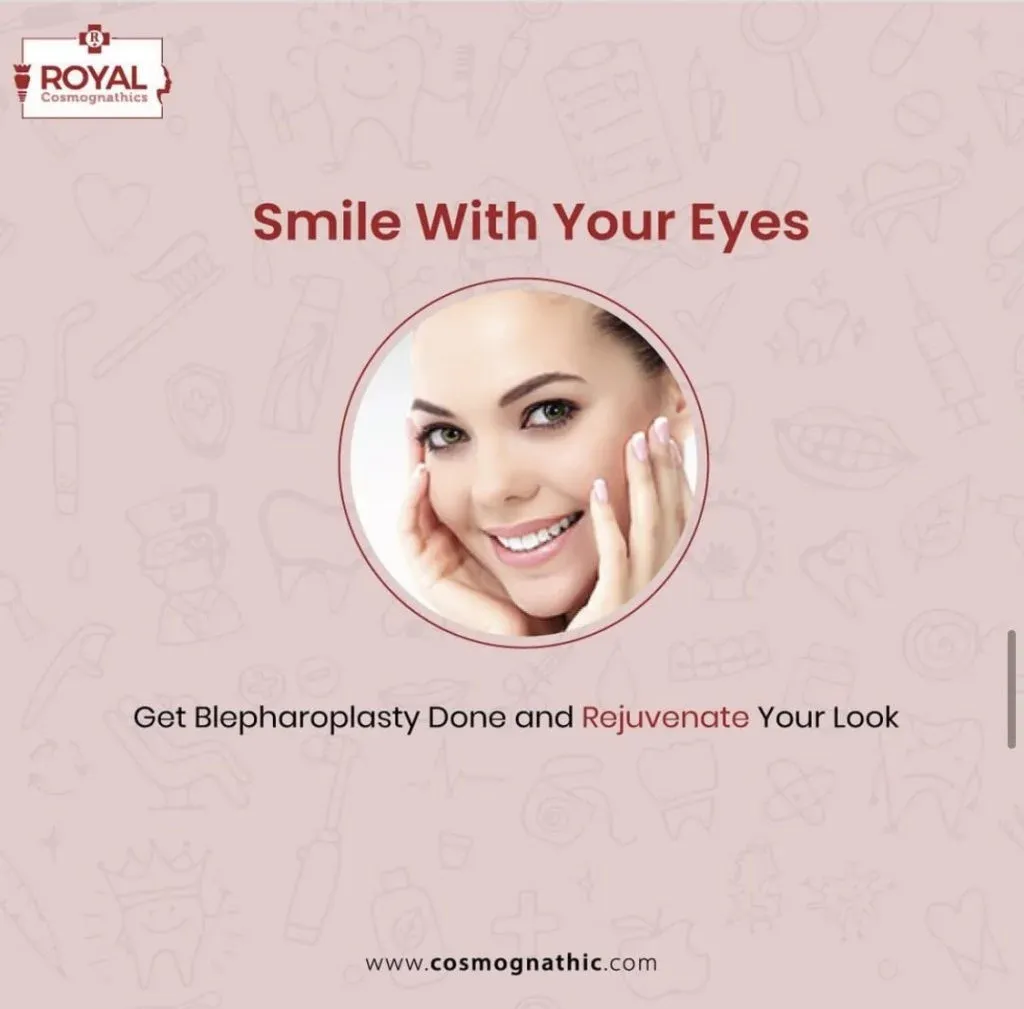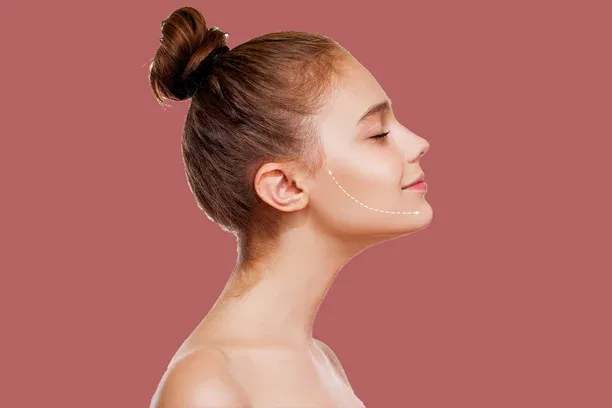
Lower Jaw Protrusion
In optimal facial proportion, the lower jaw ideally aligns behind the upper jaw. However, facial discrepancies may result in the lower jaw being positioned externally, a prevalent issue in many maxillofacial patients. This condition not only affects the jaw’s placement but can also lead to cross-bite issues with the teeth. An imbalanced jaw has the potential to cause difficulties in speaking, biting, chewing, swallowing, and breathing, while also exerting undue stress on the temporomandibular joint system. To address such concerns, jaw surgery emerges as a viable solution for correcting lower jaw protrusion and restoring facial harmony.
Why does Lower Jaw Protrusion happen?
- Genetic: There is a usually a familial trend in the disproportionate size of the lower jaw.
- Hormonal disturbances: Over secretion of growth promoting hormones can lead to a class 3 bite.
- Medical Conditions: Many syndromes are also associated with lower jaw protrusion. Therefore, it is imperative that a complete history is made.

What are the effects of Lower Jaw Protrusion?
- As this cosmetic deformity is attended during the growth phrase, it can lead to a reduced level of confidence.
- The reverse bite may lead to extra stress of the dentition and may cause periodontal problems, difficulty in maintaining the oral hygiene, crooked teeth and loss of tooth.
- As the bite is different, the stress on the joint is higher. This may lead to TMJ pain, and dysfunction in adult life.
Such discrepancies of the jaw can be corrected successfully using a wide array of treatment protocols which are set according to the patients age and preferences. At Royal Cosmognathic, the attending doctor is a maxillofacial surgeon. Maxillofacial surgeons are the experts of such surgical treatment of jaw.

Know your treatment options for Lower Jaw Protrusion
Depending on the severity of the discrepancy and the age of the patient many treatment options are available. It is best to consult the concerned health care professional for an opinion.
Orthopaedic Appliance
It is like a chin cup which is banded to the head. It provides a negative force and physically restricts the growth of the jaw. Major jaw discrepancies can be averted. This treatment modality can only be used for individuals in growing age that is when the permanent teeth are erupting, around 7-10 years of age.
The biggest drawback is the need to wear a cumbersome appliance over the face. Such individuals may not accept this appliance when going to school or amongst their peers.
Orthodontics or Braces
In situations where the jaw discrepancy is minimal or patient is not bothered by the jaw discrepancy, but the teeth are not aligned, then use of braces is an option. It is best suited for individuals in the growing age before the age of 25 years. Orthodontic correction may require extraction of 1 or more teeth then physically pulling the teeth back into position. The treatment time of such cases can be long.
Cosmetic Tooth Surgery
In cases where the need of the patient is urgent or individuals are unsuited for orthodontic treatment, a cosmetic tooth correction of tooth can be done. Like braces, cosmetic tooth treatment can only camouflage the actual discrepancy. But the treatment can be completed in 1- 2 visits with minimal downtime.
Orthognathic Surgery for Lower Jaw Protrusion
For moderate or severe discrepancies, where other conventional treatment options will not work a surgical intervention may be required. Traditionally the such treatments require a presurgical and post surgical phase of about 9 months each. Hence the treatment would be around 18 months in total. Advanced techniques with surgery first protocol, virtual surgical planning a surgical guide can be prepared. In such treatment protocols the treatment duration is reduced considerable. The treatment duration is reduced to a 3 day period with downtime of about 7 days.
Surgery can be performed for Lower Jaw Protrusion?
Mostly commonly the lower jaw surgery involves the repositioning of lower jaw along with the dentition by placing cuts into the bone. Such a treatment is called as the sagittal split osteotomy. In cases where only the front of the lower required correction then a genioplasty or anterior segmental osteotomy can be performed. The decision of the type of surgery required depends on the severity of the case and also the need of the patient. It is quite possible to avoid the sagittal split osteotomy by doing only a relatively minor chin repositioning. The final treatment procedure with complication should be discussed.
Surgical protocols to expedite Lower Jaw treatment
- Use of 3D models of before, during and after surgical.
- Virtual surgical planning to actually determine the bony and the dentition.
- Use of customized or prebend implants to reduce the surgical time.
- Enameloplasty or occlusal rehabilitation protocols to eliminate or limit the need for pre surgical orthodontics.
- Use of dental cosmetic and camouflage techniques to get the bite aligned.
Common procedures performed with correction of Lower Jaw Protrusion
- Upper jaw correction
- Rhinoplasty
- Chin Surgery
- Neck Lift
- Facial rejuvenation



What are the complications with such jaw surgeries?
All surgeries are performed under adequate anesthesia. Hence there is an inherent risk involved. Risk from the anesthesia itself is quite low because of the advancement in anesthesia and other safe practices. The surgery itself is not life threatening. Literature reports that the rate of complication is in such a surgery is as low as 4%. The complication may involves, a long term numbness of the lower lip, long term swelling of the face. Other complications can be related to the surgical complexities including hemorrhage, bad split of the jaw and hardware failure. Most of the complications can be managed either in the post- operative care or another surgical intervention at least 6 months later. Discuss the possibilities of complication and how can they be managed with your surgeon before proceeding for the treatment.
A typical post-surgical care includes:
1 – 2 days of hospital stay
5 – 7 days of bed rest with light movement
7 – 10 days for resuming work, school
2 months to get comfortable chewing
Weekly appointments are required upto two months
Lower Jaw Protrusion Condition
Lower Jaw Protrusion or an Overgrown Lower Jaw (Mandible) is a condition where the lower jaw protrudes or comes beyond the upper jaw causing a “long face” and making the nose and eyes to look disproportionately small. Disproportionate jaws can lead to problems with speaking, biting, chewing, swallowing and breathing. The condition also may cause undue stress on the jaw joint (TMJ) and facial muscles. Improper alignment of jaws and teeth may affect the entire facial appearance. This may be corrected by surgically reducing excess bone in the lower jaw, shortening and setting the chin back. The surgical procedure used for misaligned jaw is called as mandibular surgery. This involves cutting and moving your jaw to a new position. This takes place under general anaesthesia.
Misaligned jaw correction can be treated in one day. Patient needs to take care of post recovery which may take a few weeks. A small external cut on your jaw may be required during the surgery, but the wound will quickly become almost invisible. The operation is normally carried out from inside the mouth, so it leaves no external scars.
Conclusion
Jaw fractures or injuries are the third most common type of facial injuries, after fractures of the nose and cheekbone. They can be caused by many different types of impacts to the lower face. In this exclusive talk with Chirag Chamria, Oral & Maxillofacial Surgeon at Royal Dental Clinics, Mumbai; he emphasis on the topic of Lower Jaw facial injuries or fractures. This talk will specially interest someone who has had lower jaw injuries or trauma in the lower jaw. An important thing to note in case of such emergencies is that if someone finds difficulty in breathing after such a facial trauma injury, they must immediately get emergency care.
When faced with a traumatic upper or lower jaw injury, it is advisable to undergo dental treatments within the first week. This not only minimizes complications in the long term but also enhances the success rate of dental and maxillofacial procedures. Dr. Chirag Chamria underscores the importance of utilizing a Mouth Guard, a preventive measure that can mitigate sports-related injuries in certain cases. Dr. Chamria concludes with a crucial emphasis on emergency care in jaw injuries. Addressing these complications becomes more manageable through proper observation and timely examination, with jaw surgery emerging as a potential solution to achieve desired results in the bone augmentation process.

